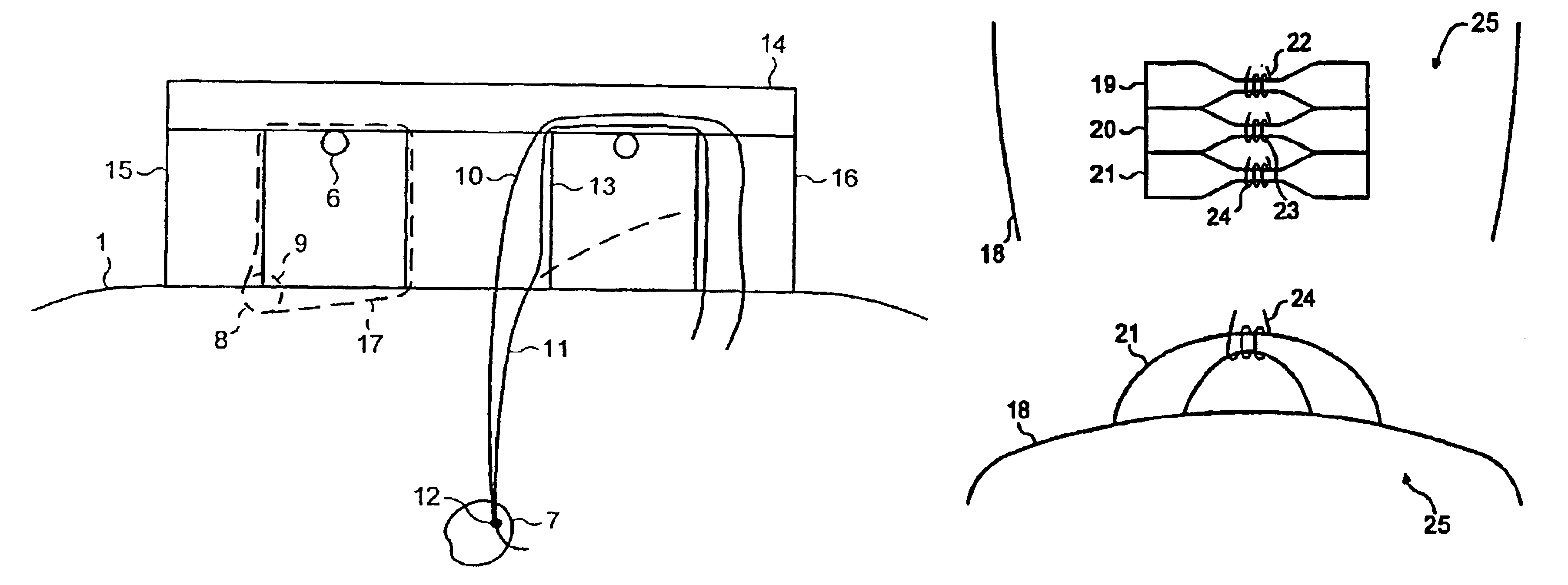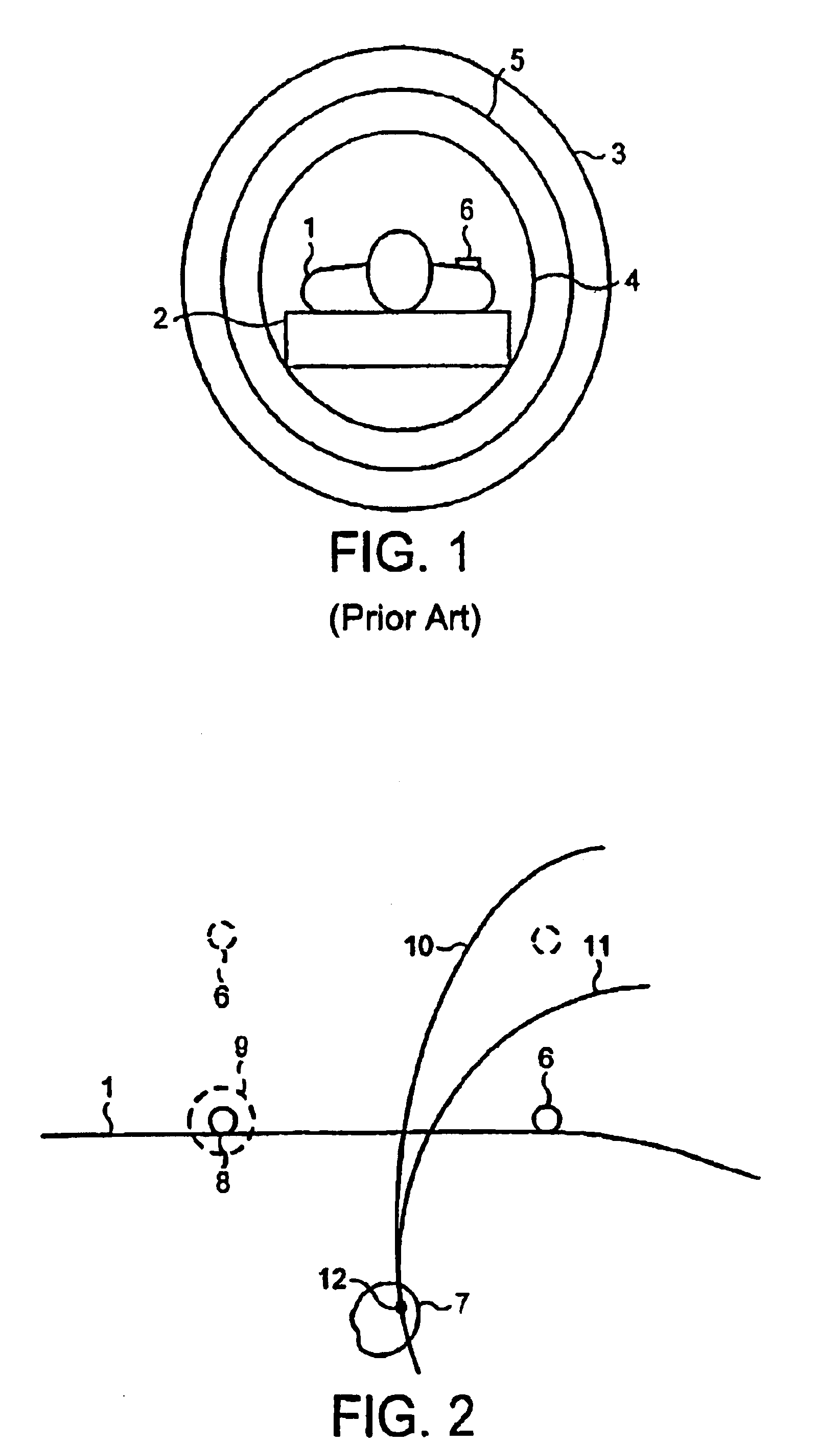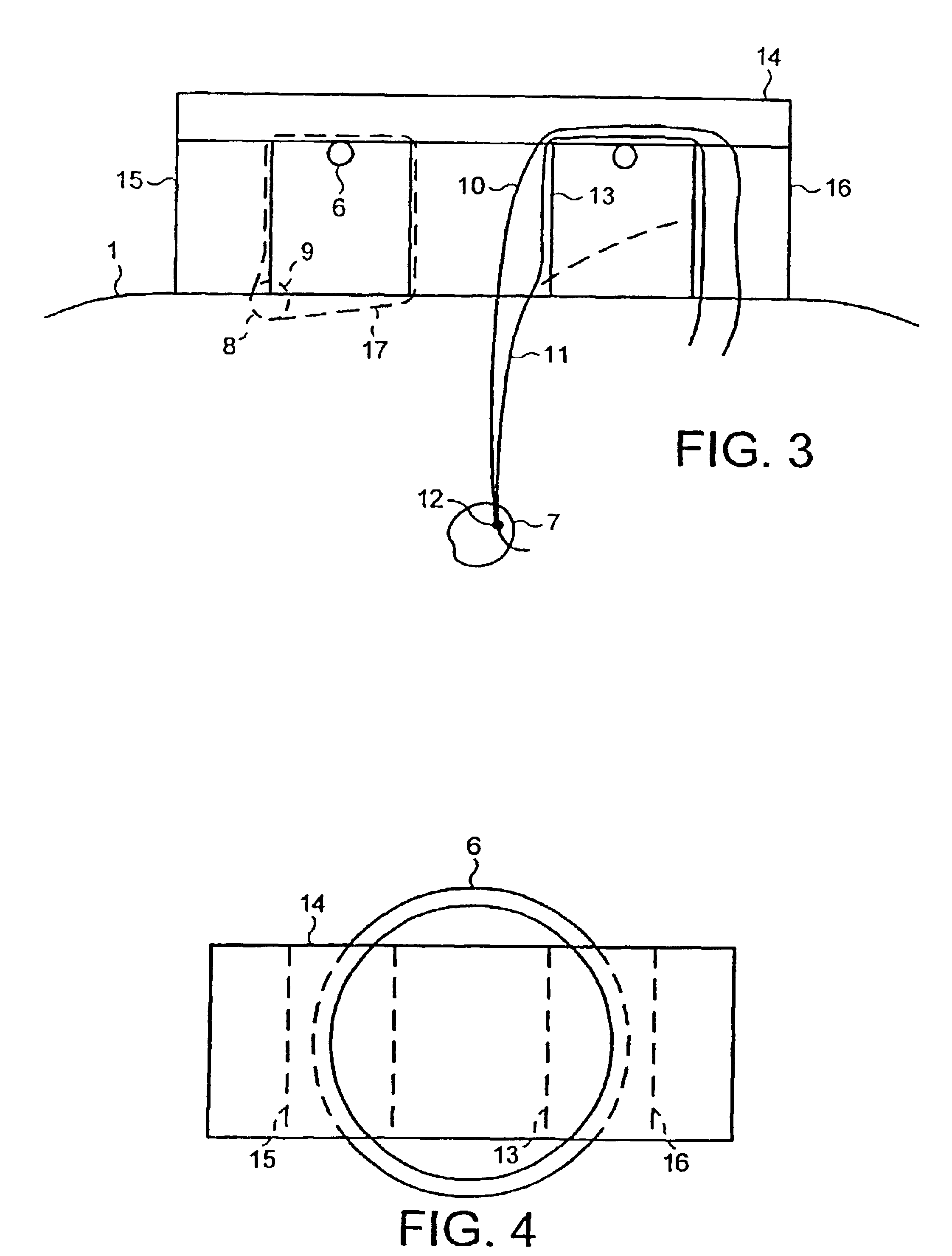Magnetic resonance apparatus including an rf magnetic flux guiding structure for improving the signal-to-noise ratio
- Summary
- Abstract
- Description
- Claims
- Application Information
AI Technical Summary
Benefits of technology
Problems solved by technology
Method used
Image
Examples
example
[0049]In one example of roll material, the material consists of cylindrical elements, with each cylinder being a “Swiss Roll”. They are made of 37 turns of film, wound on a 8 mm diameter, non-magnetic core (a glass-reinforced plastic, GRP, rod). The film is a proprietary material, known as ProFilm (Trade Mark), which consists of a Mylar (Trade Mark) base, coated with about 10 nm of aluminium and a glue layer, the whole being approximately 50 μm thick. The sheet resistance of the aluminium layer is about 2.7 Ω / square. The outer diameter of the cylinders is 11.4 mm, and the material is assembled in a hexagonal close packed lattice (i.e. as closely packed as possible). This construction provides a maximum permeability of μ=3 at 21.3 MHz and a permeability of air at other frequencies and steady state fields.
[0050]In another example, an alternative film is provided by the so-called “Superinsulation” (Trade Mark) used in superconducting magnet systems. This is a Mylar (Trade Mark) film of...
PUM
 Login to View More
Login to View More Abstract
Description
Claims
Application Information
 Login to View More
Login to View More - R&D
- Intellectual Property
- Life Sciences
- Materials
- Tech Scout
- Unparalleled Data Quality
- Higher Quality Content
- 60% Fewer Hallucinations
Browse by: Latest US Patents, China's latest patents, Technical Efficacy Thesaurus, Application Domain, Technology Topic, Popular Technical Reports.
© 2025 PatSnap. All rights reserved.Legal|Privacy policy|Modern Slavery Act Transparency Statement|Sitemap|About US| Contact US: help@patsnap.com



